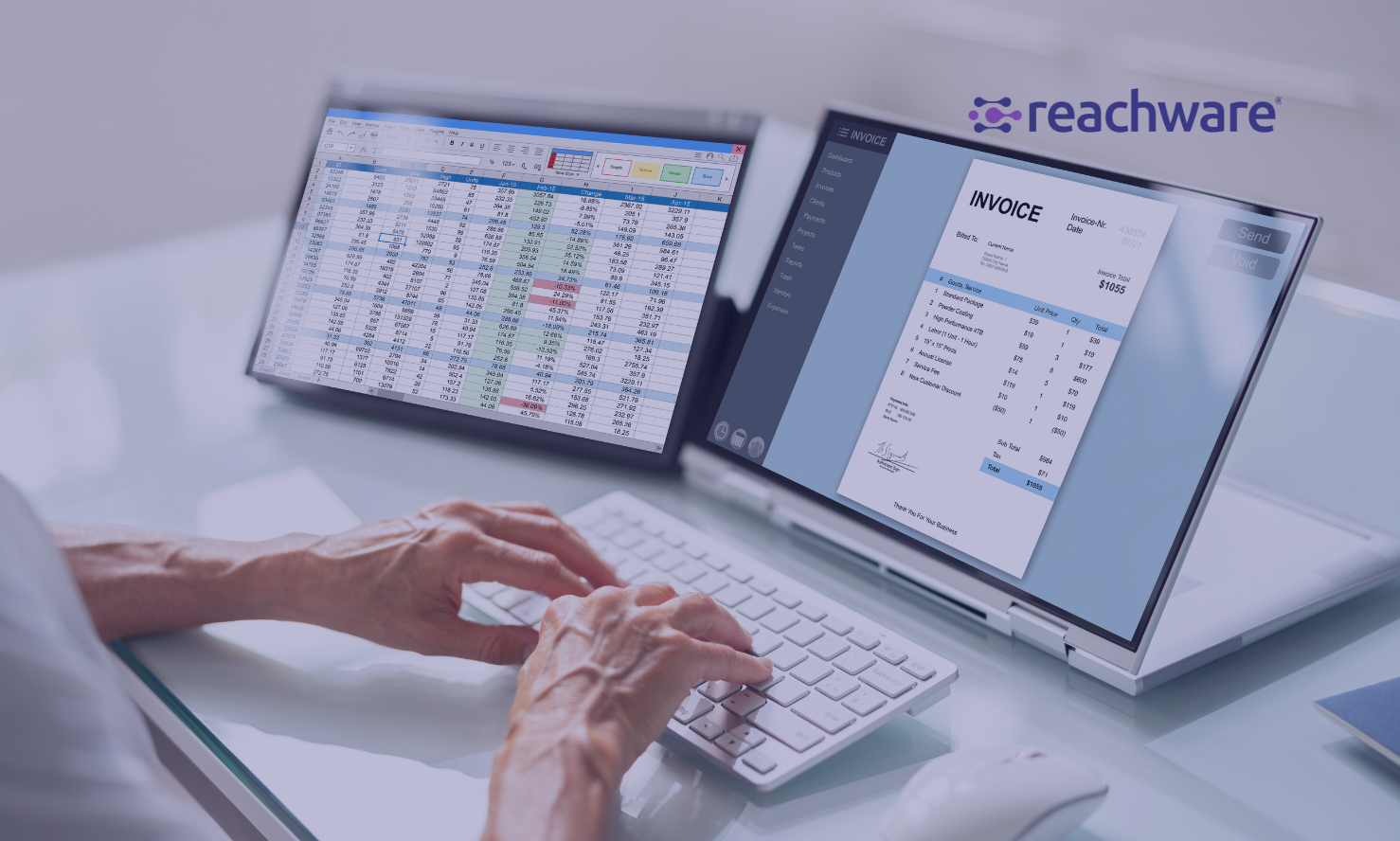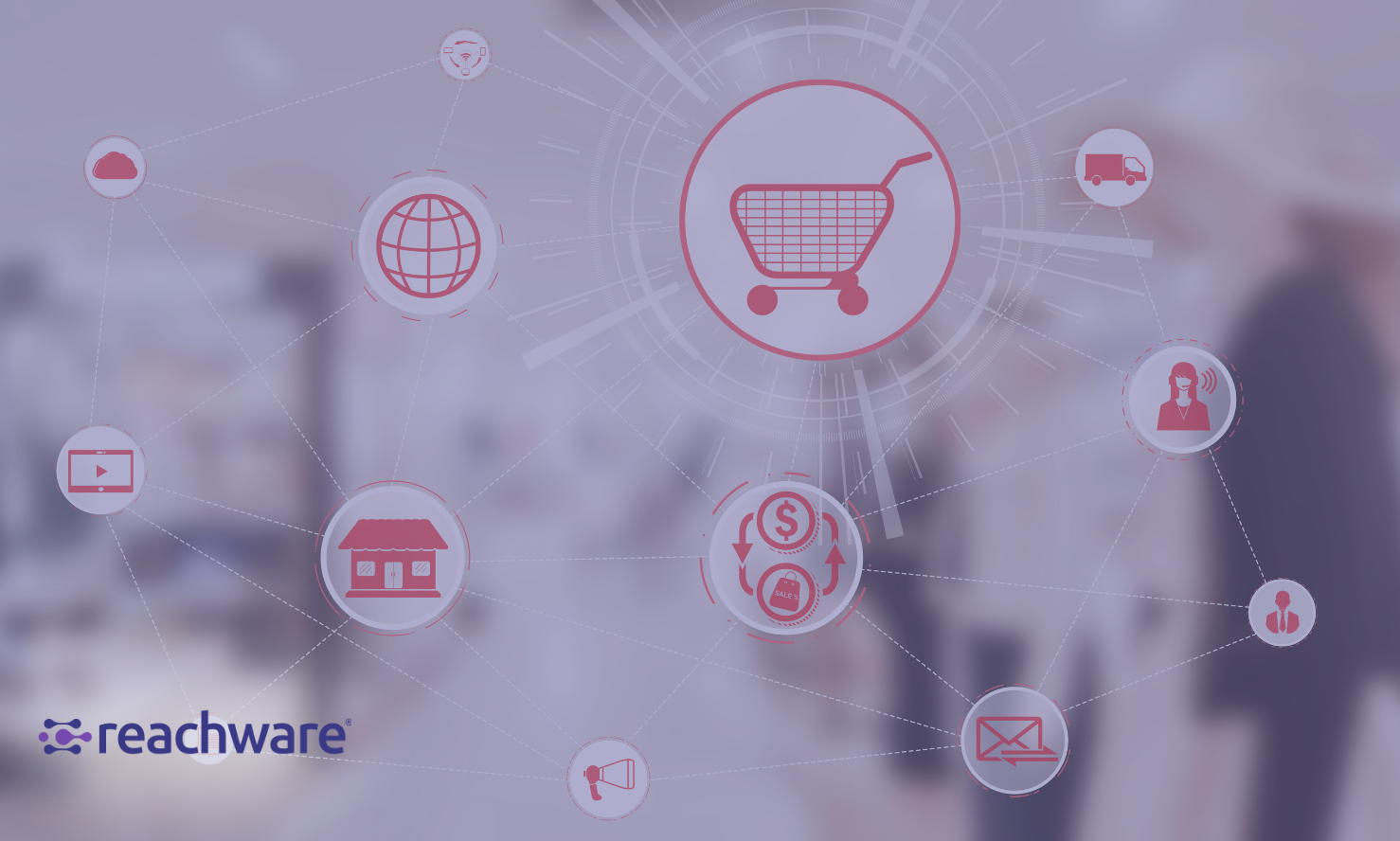How to Effectively Integrate Your Financial Systems with E-Commerce Platforms

Connecting your financial systems to e-commerce platforms is important for smoother operations, better financial tracking, and improved customer experience. A smooth integration allows for real-time transaction handling, automatic invoicing, and better financial reporting. Connecting your ERP, accounting tools, or payment systems with your online store reduces mistakes and increases efficiency. It is important to opt for the best ways, tools, and methods from Reachware to connect your banking systems with online shopping platforms.
Need of Integrating Financial Systems With E-Commerce Platforms
Connecting financial systems with e-commerce platforms allows for smooth transactions, correct financial reports, and better cash flow management. It lowers mistakes made by people, builds customer trust with safe payments. Thus, it gives instant information about income and spending. Businesses can handle tasks like creating invoices, calculating taxes, and reporting for compliance, which saves time and resources. Integration helps businesses grow by making it easier to handle more deals. A good financial system makes processes smoother, helps with better decisions, and supports long-term growth. If companies don't integrate their systems, they may experience problems like wasted time, late payments, and wrong financial information. This will be making it harder for them to succeed in a competitive market.
Key Financial Systems to Integrate With an E-Commerce Platform
Key financial systems to connect with an e-commerce platform include payment gateways, accounting software, inventory management, tax compliance, and enterprise resource planning (ERP) systems. Payment gateways help make deals safe and quick. And accounting software keeps track of finances accurately and generates reports. Inventory management tools help keep track of stock levels to avoid selling too much or running out of items. Tax compliance tools automatically calculate sales tax. This reduces the mistakes and avoids legal issues. ERP systems offer a single tool for managing financial, sales, and operational information, helping businesses run smoothly. Combining these methods makes things run more smoothly, lowers mistakes, and helps the business grow.
Steps to Integrate Financial System with E-Commerce Platform
For a smooth integration of financial system with –commerce platform, there are some steps that needs to be followed which includes the following:
Identify Your Business Needs
First, evaluate your e-commerce financial needs including inventory control, tax compliance, multi-currency compatibility, and sales tracking. Knowing these requirements will enable you to select the correct accounting program and integration tool for flawless financial control.
Choose Compatible Accounting Software
Choose an accounting system that fits your e-commerce system really nicely. Well-known choices such QuickBooks include built-in e-commerce systems. Make sure the program handles automatic financial reporting, payment processing, and transaction synchronising.
Utilize APIs or Middleware for Integration
Use APIs (application programming interfaces) to provide direct connection between your e-commerce platform and financial system. Middleware technologies such as Webgility or Zapier help to close gaps between incompatible systems therefore guaranteeing seamless data flow free from human involvement.
Test the Integration Process
Test transactions to make sure sales, refunds, and expenses are appropriately recorded before completely implementing. Look for tax calculations, data syncing problems, and inventory updates. Fix any mistakes now to prevent financial disparities down the road.
Deploy and Monitor the System
Start the integration once testing goes off well. Track constantly financial reporting, transaction accuracy, and system performance. As your online store grows, routinely update programs and adjust settings to guarantee effectiveness.
Financial Integration Improves the Efficiency of Businesses
Financial integration helps businesses work better by automating deals, cutting down on manual data entry, and providing instant access to financial information. It reduces mistakes in matching records, speeds up order handling, and improves money flow management. Automated billing and tax compliance make it easier for businesses to handle paperwork, so they can concentrate on growing. Integration also offers data-driven insights, helping businesses make informed financial decisions. By improving processes in accounting, payments, and inventory, businesses can work more efficiently and save money. A smooth financial system improves customer experiences because fast and safe transactions build trust and happiness, leading to better business performance.
Can Financial Integration Help With Tax Compliance?
Financial integration is important for tax compliance because it helps automate tax formulas, reporting, and filing. Integrated tools help apply sales tax, VAT, or GST correctly based on where the customer is and the details of the transaction. This lowers human mistakes, cuts down on audit risks, and helps follow local and global tax rules. Automated tax tools change rates instantly, helping businesses follow new laws. Integrated financial systems create thorough tax reports, making it easier for businesses to file at the end of the year and avoid penalties, which saves time and money.
Role of Payment Gateways in Smooth Financial Integration Processing
Payment gateways connect online shopping sites with banks, allowing safe and easy processing of transactions. They provide instant payment approval, help stop fraud, and convert currencies for foreign sales. Integrated payment platforms automatically keep financial records in sync with accounting systems, which helps to reduce mistakes that can happen when reconciling manually. They improve customer experience by offering different payment choices, like credit cards, digital wallets, and buy-now-pay-later options. Payment gateways make it easier for online businesses to handle money, control cash flow, and keep track of their finances better.
Important Considerations To Follow If Integration Fails
Review API settings first to be sure all credentials are typed correctly. Examine error logs to find particular problems driving down performance. Try restarting the machine, cleaning data sync, or re-connecting your financial tools. See the technical support team of the program for professional troubleshooting and resolution should issues still exist. Timely maintenance and regular monitoring can help to avoid future breakdowns and maintain your financial integration in flawless operation. Your banking system must stay safe, compatible, and efficient, hence regular updates are absolutely vital. Often releasing updates to increase security, repair flaws, and boost speed are software companies. Maintaining current guarantees tax compliance, helps avoid integration problems, and enables one to change with the times in e-business. Plan regular evaluations to evaluate system performance and implement updates right away to maintain ideal integration.
Signs to Understand When Financial Integration Needs Improvement
Your system could need optimization if it shows inaccurate financial reports, slow data updates, or frequent hand corrections. Additional caution flags include security flaws, duplicate or missing entries, and transaction mistakes. Inaccurate financial tracking resulting from poor integration might compromise corporate decisions. To find inefficiencies, routinely review your financial data and track performance measures. Changing to a stronger integration solution, upgrading software, or strengthening API connections will help to increase general accuracy and efficiency.
Common Challenges in Integrating Financial Systems With E-Commerce
Data Synchronization Issues
One of the biggest hurdles in connecting financial systems with e-commerce platforms is making sure data updates happen in real-time. Mistakes in transaction records, product changes, and financial reports can result in wrong conclusions and bad decisions. Without proper synchronization, companies can have problems like selling too much, pricing things incorrectly, or taking too long to report finances.
Compatibility and System Integration Barriers
Many businesses use different banking tools and platforms, but some of these may not work well with their online shopping system. Older financial systems usually don't have APIs or current ways to connect, which makes it hard to link them with new digital platforms. This can lead to expensive special work or problems from entering data by hand.
Security and Compliance Risks
Financial data is very sensitive, and combining different methods raises the chances of security problems. Businesses need to follow financial rules, like PCI DSS for handling payments and laws for paying taxes. If data is not protected correctly, it can result in theft, data leaks, and legal consequences.
High Implementation Costs
Connecting financial systems with an online shopping site usually needs a lot of money spent on software, development, and technology. Small businesses often find it hard to afford modern financial tools. As a result, they depend on manual methods that can be slow and lead to mistakes.
Scalability and Performance Issues
As businesses grow, their financial tools need to manage more transactions. Badly connected systems might have trouble growing, which can cause slow performance, payment issues, or crashes during busy shopping times. It’s important to make sure the merger can grow with the business for lasting success.
Method to Automate Invoicing in My E-Commerce Store
To automate invoicing in your online store, connect your accounting software or invoicing tools with your website. These systems immediately create invoices for each transaction, which cuts down on manual work and reduces mistakes. Automated invoicing systems can email invoices to customers, add taxes, monitor payments, and remind customers if their payments are late.
Additionally, they connect with payment gateways, ensuring real-time updates on paid and pending invoices. By simplifying invoicing, companies can manage their cash flow better, improve financial accuracy, make things easier for customers, and lessen the amount of administrative work needed.
Major Security Measures to Take When Integrating Financial Systems
Data Encryption and Secure Communication
Financial data is highly sensitive, needing robust encryption protocols to protect transactions and customer information. Using SSL and TLS protects contact by encrypting data between online shopping sites, payment processors, and financial systems. End-to-end encryption keeps your data safe from being accessed by anyone who shouldn't see it while it is being sent.
Multi-Factor Authentication (MFA)
To improve security, businesses should use Multi-Factor Authentication (MFA) for entering financial systems. MFA (Multi-Factor Authentication) asks users to confirm their identity using more than one method, like passwords, fingerprints, or temporary codes. This lowers the chance of unwanted entry, even if login information is stolen.
Compliance With Financial Regulations
Businesses must follow financial rules like PCI DSS (for payment security), GDPR (for data protection), and SOC 2 (for service organization controls). Following these standards makes sure that customer payment info, financial records, and personal data are treated safely and legally.
Regular Security Audits and Vulnerability Assessments
Conducting regular security audits helps spot vulnerabilities in integrated banking systems. Penetration testing, vulnerability screening, and compliance checks help keep security measures current. Businesses should also perform real-time monitoring to discover suspicious activities and potential breaches.
Role-Based Access Control (RBAC)
Restricting financial data access based on user jobs reduces security risks. Role-Based view Control (RBAC) makes sure that only authorized people can view important financial information. Keeping access logs and monitoring user behavior helps identify possible threats and unauthorized actions.
Tips to Choose the Right Integration Tools for My Business
To choose the right integration tools, you need to consider if they work well together, can grow with your needs, are secure, and offer management options. First, check if the tool works well with your online store, accounting system, and payment options. Scalability is important to support business growth, ensuring the system can handle increasing transactions. Important security features like encryption, following financial rules, and preventing fraud are vital for keeping private information safe.
Find tools that automate jobs like updating transactions in real-time, calculating taxes, and creating invoices. Easy-to-use designs and good customer service help make setup and problem-solving easier. Also, think about how much it will cost by looking at different price plans and what you might earn back. Reading user reviews and getting advice from industry experts can help you make a good decision. Choosing the right tools for integration improves efficiency, lowers mistakes, and simplifies financial tasks, helping businesses concentrate on growth and keeping customers happy.
Conclusion
Connecting financial systems with e-commerce platforms improves how well a business runs, boosts accuracy, and increases customer happiness. By using automation, safe payment options, and real-time data updates, businesses can simplify their financial tasks and make better decisions. A good system from Reachware cuts down mistakes, helps manage cash flow, and supports business growth.
Frequently Asked Questions
How can AI and machine learning enhance financial system integration?
AI and machine learning help process data automatically, find problems, and improve financial tasks, making transactions quicker and more accurate.
Are there industry-specific financial integration solutions?
Yes, industries like retail, healthcare, and manufacturing have created financial integration solutions that suit their compliance, reporting, and operational needs.
How do I handle discrepancies in financial reports post-integration?
Regular checks, automatic tools for matching records, and immediate data verification help quickly find and fix mistakes.
What are the legal and regulatory considerations?
Businesses need to follow tax laws, data privacy rules (like GDPR), and financial reporting standards to stay legally safe.
How can I scale my financial integration as my e-commerce grows?
Using cloud services, flexible APIs, and automated tools makes it easy to grow while staying accurate and efficient.























